New employee onboarding is typically defined as the process of integrating a new hire into a company’s culture, familiarizing them with policies and procedures, and preparing them to get started in their new role. A genuine onboarding experience goes beyond paperwork and formality. It’s also an opportunity to extend a warm welcome, provide support, and instill confidence in the newest member of your team. When executed effectively, employee onboarding becomes a mutually beneficial process for the new hire and the entire organization. It lightens the load on their team or supervisor, fostering a consistent experience that facilitates rapid integration.
A good onboarding program is a win-win situation. Let’s look at six benefits of getting onboarding right and how you can effectively implement them.
Haiilo makes it easier for new employees to onboard and integrate into your company.
1. Better Employee Experience
Employee onboarding benefits organizations and employees by offering a holistic journey that begins when a candidate connects with your organization. From the initial interviews to pre-boarding and the crucial first three months, each stage contributes to shaping a new hire’s understanding of your company’s culture, team dynamics, and expectations for their role.
Communication is crucial during each stage of onboarding. Here’s how effective communication can benefit your organization during every stage:
- Interviewing: Provide clarity on expectations and company values.
- Pre-boarding: Lessen first-day jitters by sharing a detailed schedule for their first day or week and include other things they should know before starting.
- Day One: Provide a thorough company orientation and clarity on what to expect, and show them around.
- Week One: Introduce colleagues, outline expectations and critical milestones, and provide a task checklist.
- Month Three: Schedule regular check-ins to offer support and gather feedback.
To enhance the employee onboarding experience, consider how you can:
- Collaborate with their manager on an onboarding plan that includes expectations and milestones.
- Foster open communication with timely responses.
- Extend a warm welcome with a personalized desk setup.
- Facilitate a comprehensive office tour.
- Incorporate different styles and training methods into their learning experience.
- Introduce them to colleagues and establish a buddy system.
- Ensure access to tools and systems with proper training.
- Regularly check in for support and feedback.
- Host events to connect new hires and celebrate achievements.
Employee onboarding is more than a checklist of action items; it’s an individual experience. While that experience is unique to each of us, it is an opportunity to create consistency, leading to a workplace where employees feel valued, connected, and supported from day one. Consider ways to continually assess and optimize your onboarding process through feedback, surveys, and other tools, identifying gaps and opportunities for ongoing improvement.
📚Continue Reading: Employee Experience Management: The Ultimate Guide
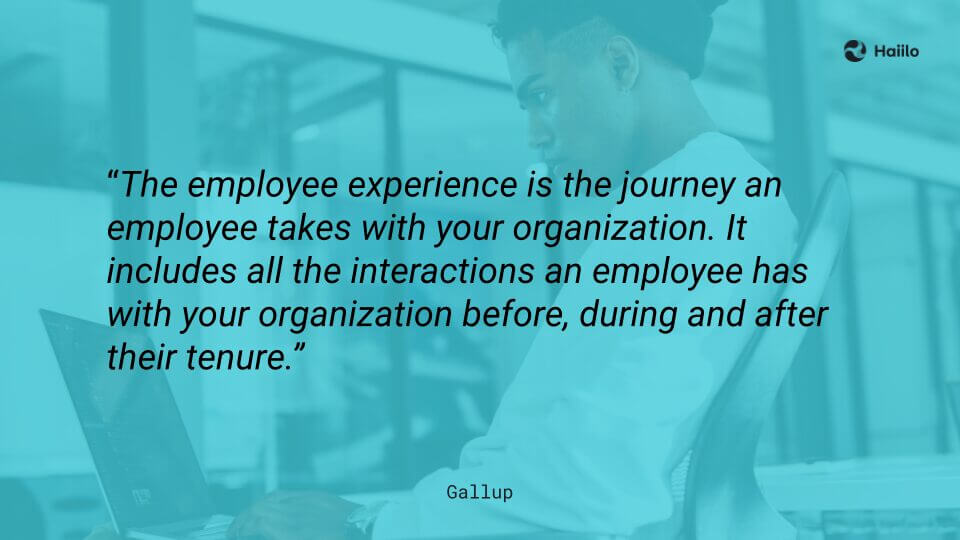
2. Higher Employee Engagement
One of the significant benefits of enhancing the employee experience is the resulting boost in employee engagement. While both are pivotal for organizational well-being, engagement centers on the employee’s connection to the meaning of their work and the company. Surveys indicate that only 23% of employees worldwide and 32% in the U.S. fall into the “engaged” category, underscoring the importance of intentional efforts.
Onboarding programs are a prime opportunity to create engagement from the start. Consider the following strategies to weave engagement into your employee onboarding process:
- Focus on Experiences: Create diverse onboarding experiences by integrating various styles of activities and knowledge-sharing methods to engage new hires better.
- Build Trust: Transparency is vital. Keep new hires informed, developing a foundation of trust from the beginning.
- Create Community: Establish social committees to cultivate a supportive environment where employees can connect, creating a sense of community.
- Discuss Growth Opportunities: Studies show that addressing development during employee onboarding increases satisfaction by 3.5x. Motivate employees by discussing potential growth and development opportunities. Provide a clear understanding of avenues for career advancement.
- Celebrate Achievements: Employees should be provided with clear milestones early on. Recognize and celebrate when new hires reach these goals, acknowledging and appreciating their journey.
By incorporating these practices into your onboarding program, you streamline the transition process and lay the groundwork for a connected workforce, leading to long-term success and improved company performance.
🧐 Learn More: Top 10 Employee Communications Platforms in 2024
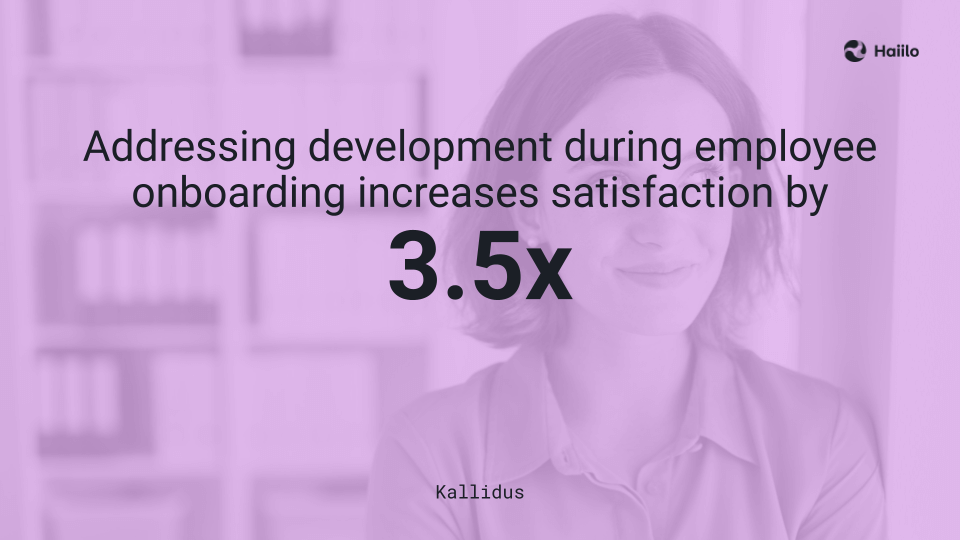
3. Retain Top Talent
Consider the onboarding process like a first date. New hires show up for their first day eager and fully engaged, seeking an experience that reinforces confidence in their decision to join. If their onboarding is disorganized or confusing, it’s unlikely to set the stage for a long-lasting relationship, just as you’d expect from a lackluster first date.
Proper onboarding programs go beyond the initial excitement. They also cultivate an environment where employees feel valued, supported, and connected to your company culture. This connection leads to a happier workforce with a genuine desire to stay. According to a study by Brandon Hall Group, organizations with robust onboarding processes witness an impressive 82% improvement in employee retention—an indication of the onboarding experience’s critical role in engaging employees right from the start.
Retention is about more than just education and training. It’s equally vital to acclimate new employees to the company culture. This integration creates comfort, support, a sense of belonging, and increased loyalty. Implementing buddy or mentor programs, providing diverse learning experiences, and setting clear expectations are impactful ways to integrate new hires into the company culture.
By approaching employee onboarding as the beginning of a meaningful relationship, your organization ensures that each new employee feels welcomed and deeply connected to the values and atmosphere that define your workplace.
🤝 Check out 12 Strategies to Increase Employee Retention

4. Recruit Top Talent
Robust onboarding programs are not just about integrating new hires; they catalyze increased engagement and happiness, transforming employees into invaluable brand ambassadors. The impact is evident—a survey by Monster reveals that 65% of respondents would consider a new job opportunity if recommended by a personal connection in their network.
Employee advocacy programs unlock your organization’s potential by expanding reach and tapping into the vast networks of your workforce. However, achieving success requires more than providing tools—it’s essential to have employees who want to share valuable content, job postings, and company updates on social media.
The willingness of employees to share insights and opportunities is fueled by factors such as the ease of sharing, compelling content, and trust in leadership. Organizations can also consider incentive programs or gamification to motivate employees to share, further expanding their reach. When these elements align, employees are more likely to discuss and promote the organization publicly.
🚀 Learn about how Salesforce turned 25,000 employees into brand ambassadors in 21 months
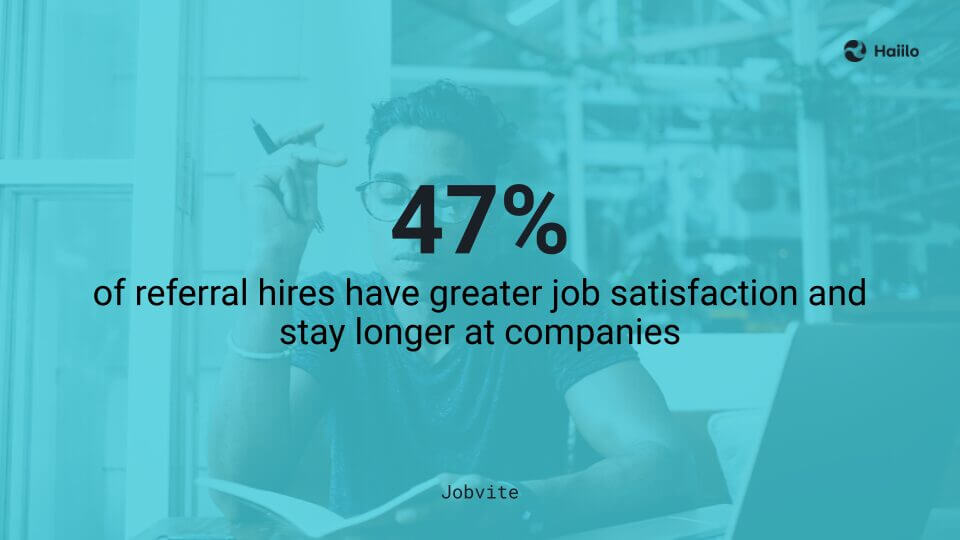
5. Stronger Company Culture
Recruiters often aim to hire individuals who align with the company culture, but a seamless integration requires intentional efforts and a comprehensive approach. Thorough onboarding programs emerge as the linchpin, building trust and engagement—two cornerstones of a robust company culture.
Consider making employee onboarding a collaborative effort. For example, the HR team may provide a comprehensive company overview, including its structure, values, and goals, while the new hire’s team takes over role-specific training and support. This dual approach ensures a richer onboarding experience, offering new hires a holistic understanding of the company and the essential training needed for success in their role. It also allows the new hire to meet even more new colleagues who can be a resource to them in different ways.
Studies highlight the significant impact of onboarding on integration and understanding of company culture. A remarkable 79% of employees affirm that onboarding programs played a pivotal role in helping them integrate seamlessly. These statistics underscore the critical need to immerse new hires in the company culture, setting the stage for long-term engagement.
By infusing collaboration into the onboarding process, your organization ensures a smoother transition for new hires and establishes a culture that resonates with and sustains its workforce.
🔎Read On: Why Your Communications Fall Flat: Connecting Your Internal Audience with Business Objectives
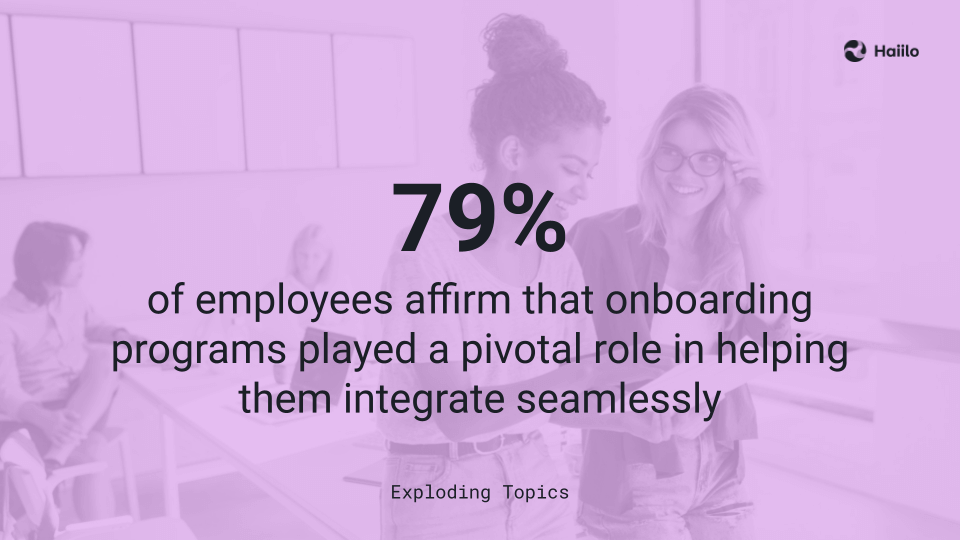
6. Increased Productivity
A Forbes and OnePoll study revealed a concerning statistic: 72% of respondents admitted feeling apprehensive about asking too many questions in their new roles. Knowledge gaps emerge when new hires hesitate to seek guidance and the onboarding program lacks comprehensive training. Teams often prematurely throw new employees into the thick of work, resulting in decreased productivity, lower job satisfaction, and an elevated risk of attrition—a lose-lose scenario for both employees and organizations.
Thorough employee onboarding accelerates new hires’ understanding of their roles, increasing confidence and reducing the risk of errors. Resources such as Standard Operating Procedures (SOPs) and well-documented processes contribute to a deeper understanding, enabling new employees to work efficiently and independently.
The Digital Experience
The rise of remote and hybrid work models has further heightened the need for these solutions and keeping teams connected. Operating in these work environments comes with challenges, and integrating communication technology is a powerful tool for overcoming those barriers.
In the ever-changing landscape of the modern workplace, the digital experience is pivotal in transforming traditional employee onboarding approaches. Harnessing technology to enhance training and communication can effectively bridge these knowledge gaps.
Moreover, digital tools enable continuous learning and skill development, allowing employees to access resources conveniently. Digital tools foster a culture of knowledge sharing and empower new hires to proactively seek guidance without feeling apprehensive.
🔥 Hot Tips: 8 Tips to Boost Employee Communications At Your Company

Leverage Technology to Enhance Employee Onboarding
To further boost productivity, companies should utilize technology to make onboarding more effective. Employee communication platforms enhance employee engagement, aligning the workforce with business goals and improving team collaboration. How so?
Simplified Communication that Empowers Employees
Solutions like Haiilo play an essential role in the onboarding journey. They simplify the delivery of tailored updates through multichannel communications, which builds trust and creates a more connected workforce.
Modern intranets foster collaboration and knowledge sharing, improving confidence and creating alignment. When employees are connected to the organization, its goals, and their peers, they are more likely to become powerful brand advocates.
Easier Access to Data and Insights
To continuously improve the onboarding experience, you need data and insights from different sources. With technology, organizations can implement various methods for feedback, such as surveys, assessments, and analytics. These tools offer unique insights into organizational health and the drivers that motivate the workforce. This knowledge creates an opportunity for more robust alignment with employees, leading to improved key performance indicators (KPIs).
A well-organized onboarding process addresses the initial challenges of knowledge gaps and becomes a strategic lever for ongoing productivity, job satisfaction, and organizational success.
💡Want more insights? Check out Workplace Technology: Why It Matters and How to Choose It
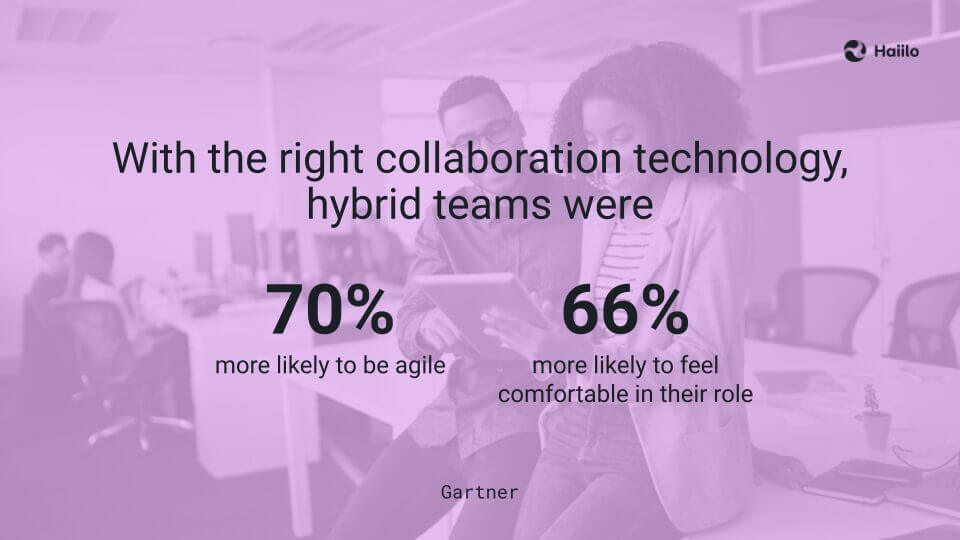
Conclusion
Ideally, a new hire joining your company should be the beginning of a meaningful journey and long-lasting relationship that benefits the employee and the organization. Modern onboarding goes beyond the conventional and establishes a cohesive process that streamlines the new hire’s integration and enhances the organization’s overall health.
In today’s dynamic professional landscape, ongoing feedback is crucial for organizations to navigate change and continuously improve. It lets new employees know they are heard and builds trust within the organization. Optimizing the onboarding process also supports long-term employees, creating a cycle of growth and success.
Ultimately, employee onboarding is a holistic journey and a distinctive experience. It serves as an opportunity to instill consistency and construct a workplace where employees feel welcomed, valued, connected, and supported from day one. When done right, employee onboarding becomes a pivotal driver of success and cohesion within the organization.









